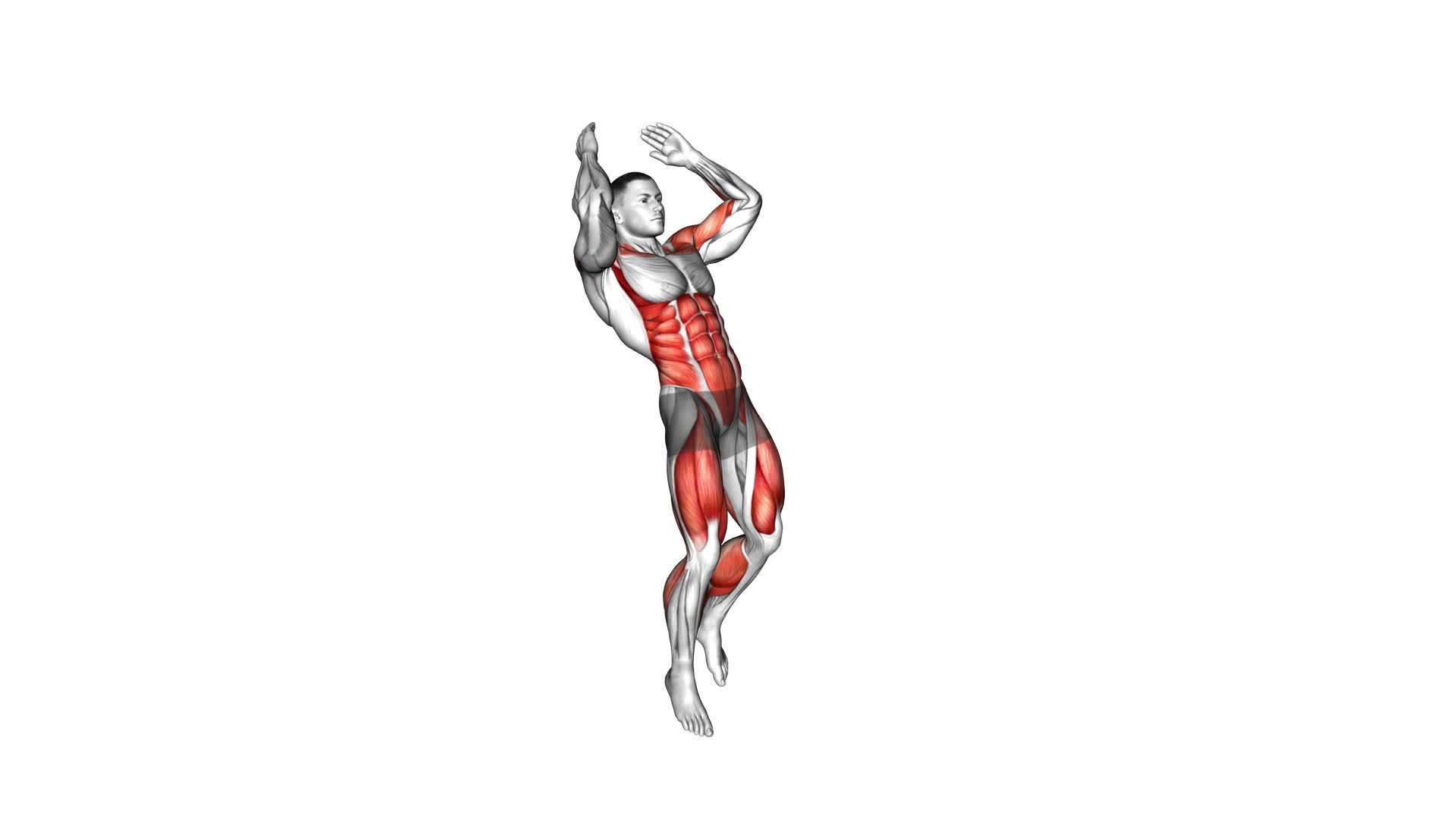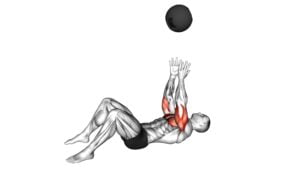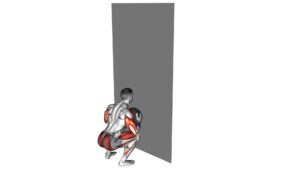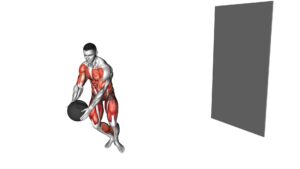Standing Power Throw – Video Exercise Guide & Tips

Are you looking to improve your throwing power and distance? Look no further! In this article, we've got you covered with a video exercise guide and helpful tips for the Standing Power Throw.
Watch This Exercise Video
Discover the benefits, learn the proper technique, and avoid common mistakes. Plus, we'll share expert advice on increasing your power and distance.
Get ready to take your throwing game to the next level with our informative and concise guide. Let's get started!
Key Takeaways
- Enhances explosive power
- Targets muscles in legs, core, and upper body
- Improves overall strength
- Engages multiple muscle groups simultaneously
Benefits of the Standing Power Throw
Discover the benefits of the Standing Power Throw and how it can improve your overall strength and explosive power.
The Standing Power Throw is a powerful exercise that can greatly contribute to your improved athletic performance. By incorporating this exercise into your training routine, you can enhance your explosive power and develop stronger muscles.
Explosive power training plays a crucial role in various sports and activities, such as basketball, soccer, and track and field. The Standing Power Throw specifically targets the muscles in your legs, core, and upper body, which are essential for generating explosive force. This exercise requires you to explosively throw a medicine ball as far as possible, engaging multiple muscle groups simultaneously. With consistent practice, you can increase your throwing distance, indicating an improvement in your explosive power.
In addition to enhancing explosive power, the Standing Power Throw also improves overall strength. The explosive movements involved in this exercise require your muscles to exert maximum force in a short amount of time. This leads to increased muscle strength and endurance, allowing you to perform better in various physical activities.
Proper Technique for the Standing Power Throw
To effectively perform the Standing Power Throw, it's important to consistently practice the proper technique. The standing power throw is a functional exercise that requires explosive power and upper body strength.
One important aspect of the proper technique is maintaining a stable base by standing with your feet shoulder-width apart. This will allow you to generate maximum power from your lower body. As you prepare to throw, it's essential to keep your core engaged and your back straight. This will help transfer power from your lower body to your upper body.
When executing the throw, remember to use your entire body, not just your arms. The power should come from your legs and hips, with your upper body acting as the conduit for that power.
There are also variations of the standing power throw that can be incorporated into your training routine. One variation is the medicine ball standing power throw, where you hold a medicine ball and perform the same explosive movement. This variation adds resistance and increases the challenge, further developing your upper body strength. Another variation is the kettlebell standing power throw, where you use a kettlebell instead of a medicine ball. This variation adds an element of stability and grip strength to the exercise.
In conclusion, practicing the proper technique for the standing power throw is crucial for maximizing your power and achieving optimal results. By focusing on maintaining a stable base, engaging your core, and utilizing your entire body, you can effectively generate explosive power.
Additionally, incorporating variations of the standing power throw can add variety and challenge to your training routine, further enhancing your upper body strength. So, keep practicing and perfecting your technique to excel in the standing power throw.
Common Mistakes to Avoid
When performing the standing power throw, it's crucial to be aware of common mistakes to avoid in order to achieve optimal results. Avoiding mistakes is essential to ensure that you maximize your power and distance.
One common error to avoid is failing to engage your core muscles properly. Your core plays a vital role in generating power and stability during the throw.
Another mistake to avoid is improper foot positioning. Make sure your feet are shoulder-width apart and firmly planted on the ground to provide a stable base.
Additionally, avoid using excessive arm strength and relying solely on your upper body. The power in the standing power throw comes from a coordinated movement of your entire body, including your legs and hips.
Finally, be mindful of your timing and coordination. Ensure that you release the ball at the peak of your explosive movement for maximum power.
By avoiding these common errors, you can enhance your performance in the standing power throw.
Now, let's move on to some tips to increase power and distance in the next section.
Tips to Increase Power and Distance
To increase power and distance in the standing power throw, focus on proper technique and incorporate specific exercises to strengthen your muscles. Power training exercises are essential for enhancing your overall power output. Exercises like squats, deadlifts, and lunges can help build lower body strength, which is crucial for generating power in the throw. Additionally, plyometric exercises for explosive strength, such as box jumps, medicine ball throws, and explosive push-ups, can improve your ability to generate force quickly. These exercises train your muscles to produce maximum power in a short amount of time, translating to increased distance in the standing power throw.
Incorporating rotational exercises like Russian twists and cable woodchops can also help improve power in the throw. These exercises target the muscles responsible for rotation, allowing you to generate more power through your upper body. It's important to note that proper technique is key in maximizing power and distance. Focus on using your entire body, engaging your legs, core, and upper body in a coordinated and explosive motion.
Sample Standing Power Throw Workout Routine
For an effective sample standing power throw workout routine, start by incorporating a variety of compound exercises to target multiple muscle groups simultaneously. This will help you develop the strength and power needed for a successful throw. Plyometric exercises are an excellent choice for improving explosive power, which is crucial for generating force during the throw. Include exercises like box jumps, medicine ball slams, and squat jumps to enhance your explosive strength.
To incorporate the standing power throw into a full body workout routine, begin with a dynamic warm-up to activate your muscles and prepare your body for the intense workout ahead. After the warm-up, perform exercises like squats, deadlifts, lunges, and overhead presses to strengthen your lower body, core, and upper body. These compound exercises won't only improve your overall strength but also contribute to your throwing power.
To specifically train for the standing power throw, practice the movement itself using a medicine ball. Start with lighter weights and gradually increase the weight as you get stronger. Aim to perform 3-4 sets of 8-10 throws, focusing on explosive power and proper technique.
Remember to rest and recover between workouts to allow your muscles to repair and grow. Stay consistent with your training and gradually increase the intensity of your workouts over time. With dedication and persistence, you'll see improvements in your standing power throw and overall athletic performance.
Frequently Asked Questions
How Long Does It Take to See Improvements in Power and Distance With the Standing Power Throw?
Improving your power and distance with the standing power throw can take time. It depends on various factors such as your current fitness level, dedication, and consistency.
By following proper technique and making necessary modifications, you can start seeing improvements in a matter of weeks. However, it's important to remember that progress varies from person to person.
Stay committed and keep working on your skills, and you'll notice positive changes in your power and distance over time.
Can the Standing Power Throw Be Modified for Individuals With Limited Upper Body Strength?
If you have limited upper body strength, don't worry! The standing power throw can be modified to suit your needs. There are alternative exercises and modified adaptations available that can help you build strength in other areas of your body.
By working on your lower body and core strength, you can still improve your power and distance without relying heavily on your upper body.
Don't be discouraged, there are options for everyone!
Are There Any Specific Warm-Up Exercises That Should Be Done Before Attempting the Standing Power Throw?
Before attempting the standing power throw, it's important to warm up properly. Incorporating specific warm-up exercises can help prepare your body for the explosive movements involved in the throw.
These exercises can include dynamic stretches, such as arm circles and trunk rotations, as well as some light cardio to increase blood flow and raise your body temperature.
Warming up not only reduces the risk of injury but also enhances performance by improving flexibility, mobility, and muscle activation.
Is It Necessary to Have a Partner or Coach to Perform the Standing Power Throw?
To perform the standing power throw, you don't necessarily need a partner or coach. Solo practice is possible, but having someone to provide feedback and guidance can be beneficial. However, if you don't have access to a partner or coach, there are alternative techniques you can use to improve your form and power.
It's important to remember that proper technique is key to maximizing your performance in the standing power throw.
Can the Standing Power Throw Be Incorporated Into Other Training Programs, Such as Weightlifting or Running?
Yes, the standing power throw can be incorporated into other training programs like weightlifting or running. It offers many benefits, such as improving explosive power and core strength.
By adding variations to this exercise, like using a medicine ball or adjusting the throwing distance, you can target different muscle groups and challenge yourself even more.
Conclusion
In conclusion, the standing power throw is a beneficial exercise for improving power and distance. By using proper technique and avoiding common mistakes, you can maximize your performance.
Incorporating tips to increase power and distance, along with a sample workout routine, can help you achieve your goals.
So, start practicing the standing power throw to enhance your athletic performance.

Author
Years ago, the spark of my life’s passion ignited in my mind the moment I stepped into the local gym for the first time. The inaugural bead of perspiration, the initial endeavor, the very first surge of endorphins, and a sense of pride that washed over me post-workout marked the beginning of my deep-seated interest in strength sports, fitness, and sports nutrition. This very curiosity blossomed rapidly into a profound fascination, propelling me to earn a Master’s degree in Physical Education from the Academy of Physical Education in Krakow, followed by a Sports Manager diploma from the Jagiellonian University. My journey of growth led me to gain more specialized qualifications, such as being a certified personal trainer with a focus on sports dietetics, a lifeguard, and an instructor for wellness and corrective gymnastics. Theoretical knowledge paired seamlessly with practical experience, reinforcing my belief that the transformation of individuals under my guidance was also a reflection of my personal growth. This belief holds true even today. Each day, I strive to push the boundaries and explore new realms. These realms gently elevate me to greater heights. The unique combination of passion for my field and the continuous quest for growth fuels my drive to break new ground.







